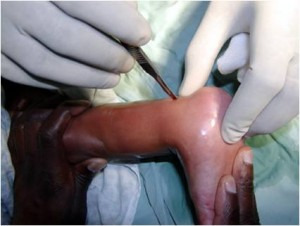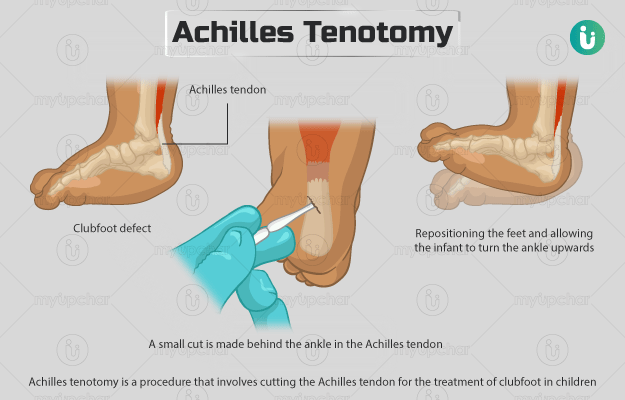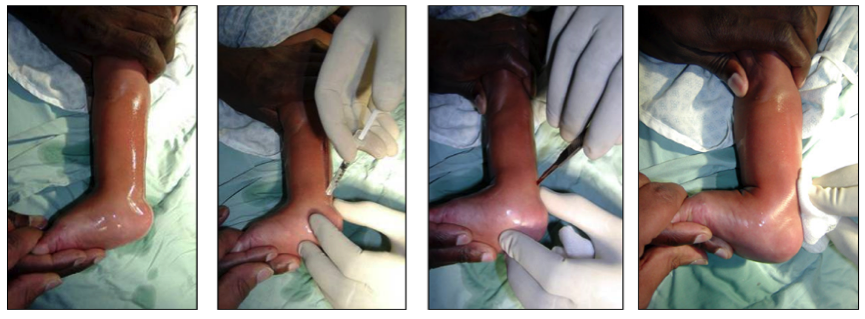About the Achilles Tenotomy Surgical Procedure.
While the Achilles Tenotomy is technically a surgery, it is more accurately described as a surgical procedure rather than a traditional surgery as most people think when they hear the word "surgery".
The Achilles Tenotomy is minimally invasive and takes just a few seconds to perform. It does not (should not) require any stitches and should not even leave much of a scar. Most (85-90%) clubfeet will need this surgical procedure performed to get the last bit of dorsiflexion required for normally functioning feet. The tendon heals lengthened, and in most cases serves baby for a lifetime of good flexion.
NoSurgery4Clubfoot prefers not to refer to the Achilles Tenotomy as surgery because it frightens parents unnecessarily. This surgical procedure is quick and does not cause any detrimental or unwanted results or side effects. The Achilles Tenotomy is good for your baby's feet and will be a long gone memory very soon.
The post tenotomy cast stays on for 3 weeks so that the tendon can heal in it's new lengthened state. This will be the very last cast of your baby's clubfoot treatment. If all has gone well, your baby's feet will be perfectly corrected and ready for the Foot Abduction Bar/Brace (BnB).
It is very important to note any cast slipping, even more important than normal (which is very important).
Do not leave a slipped post tenotomy cast on for any length of time. It is imperative that you get your child to the doctor so that a new cast can be applied as soon as you notice a slipped post tenotomy cast. The tendon could heal in a shortened state if a slipped cast remains on the foot and this will require an additional tenotomy to be performed.
This description below and the first image to the left (or above on mobile) is taken from the Global Clubfoot Initiative website:
ACHILLES TENOTOMY (PERCUTANEOUS HEEL CORD TENOTOMY)
"The Achilles tenotomy is an integral part of Ponseti management of clubfoot. Tenotomy is necessary because the Achilles tendon, unlike the ligaments of the foot, is made up of thick, non-stretchable fibres. After the tenotomy the foot is placed in a final cast in an over-corrected position of maximal abduction and dorsiflexion. The tendon re-grows in this lengthened position, allowing the range of motion needed at the ankle joint. Achilles tenotomy is required in around 80-95% of patients and should be performed when complete correction of adduction deformity is achieved but equinus deformity remains. For a detailed explanation of how to assess when Achilles tenotomy is required and how to perform the tenotomy please refer to the Global HELP manual".
For more detailed information about the benefits of the Achilles tenotomy, please see the Global Clubfoot Initiative website page that cites numerous sources.
This website (MyUpChar.com) has a very nice description of follow-up and after-care for Achilles Tenotomy.
This site, Physio-Pedia.com offers a very technical description of the Achilles Tenotomy, primarily targeted to the medical profession, but not too technical that the rest of us can't understand it.
This site also has a number of good articles/pages that offer good information. Scroll down for some more links that are too ridiculously coded for me to paste in here without tons of reworking. Blech.



